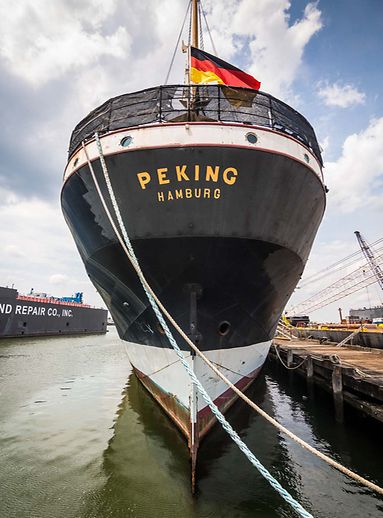
For those of you who have visited the South Street Seaport Museum at lower Manhattan, New York City, have noted the tall 4 masted barque windjammer, PEKING, as one of the primary exhibits. Sad to say, this old tall ship will no longer be at the museum. She is returning back to her home port of Hamburg, Germany for restoration. Bought by the South Street Seaport Museum in 1974, she was allowed to deteriorate to almost a sinking condition. Taken to a Staten Island shipyard for a cosmedic repair, the South Street Seaport Museum could not afford the estimated $30 million restoration to the original ship condition when built in 1911 at the Blohm & Voss ship yard at Hamburg, Germany. Scrapping the old ship was considered, but fortunately, the German government, on hearing about the possible fate of the PEKING, bought the windjamer. She has already been taken back to Germany on the heavy lift carrier, COMBI-LIFT, and when restoration is completed, will be the major exihibit at the Stiftung, Hamburg Maritim, the Maritime Museum of Hamburg.
PEKING was one of the 20 ships built, for the German export company F. Laeisz, a prosperous hat maker, whos son Carl decided to build ships for export to South America's expatriate Geman customers. His first ship was named PUDEL after his wife Sophie's natural curley hair. By the turn of the century, the deman for natural nitrate for fertilizer and the booming munitions demand of the First World War made the Laeisz's Flying P-Line the wealthy shipping company, hauling nitrate from the deserts of Chile around the perilous passage of Cape Horn. The First World War took its toll on the P-Liners, while steam freighters made sailing vessels obsolete. The last Laeisz tall ship was built in 1923. Today, there are only four original P-Liners windjammers; PEKING, POMMERN, museum ship at Mariehamn, Findland, PASSAT, museum ship at Travemunde, Germany, and the PADUA, now the Russian school ship, KRUZENSHTERN.

Happy modeling Crackers 
